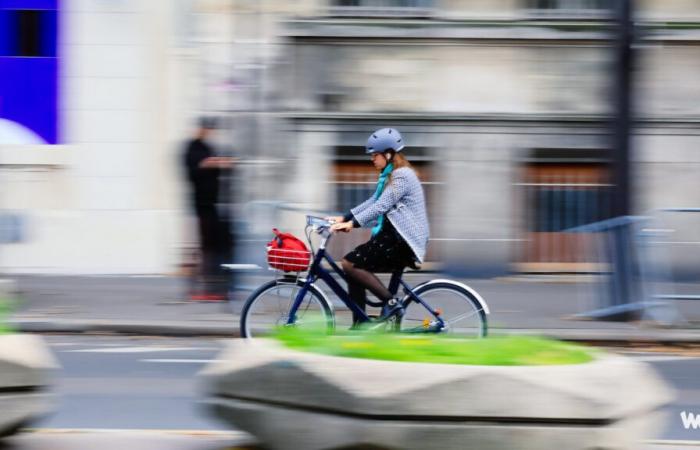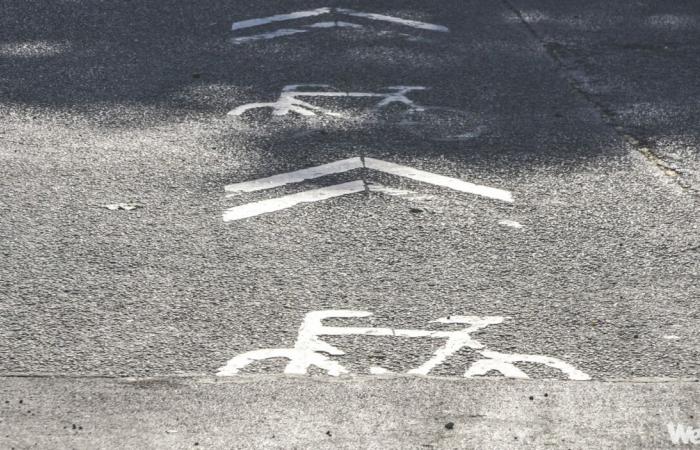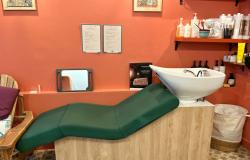Why is it so difficult to cycle in the Paris suburbs? This is the question that a student at Gustave Eiffel University in a master's degree in transport and mobility asked himself as part of his end-of-study thesis. A memoir soberly titled “Strategy for developing a cycle network in large cities, the case of the Parisian suburbs“. This work, written by Timothée Ait-Isha Serafim, proposes to review the concrete obstacles to the establishment of a cycle network. And they are numerous. We will have to wait before benefiting from a network of cycle paths in Île-de-France.
Cycling in Île-de-France: outside Paris, the struggle?

For better or worse, all of France has heard about the closure of Rue de Rivoli to through traffic. The aim was then to allocate more space for cycle traffic. If you read us, you know that it was quite a good idea, given the number of bicycles on this strategic east-west axis of the capital. But did you know that its layout corresponds to the first bicycle plan for the city of Paris? Launched in 2015, it has changed the face of the capital, at least for cyclists.
Outside of Paris, no salvation for cycle paths in Île-de-France?
“Outside Paris, there is no salvation for honest people“. This observation of the pedants in The ridiculous precious ones applies surprisingly well to cycle paths in Île-de-France. You just have to take your bike in the suburbs to see the difference, sometimes abysmal, in cycling infrastructure depending on the municipality.
It remains more difficult to cycle in the greater or lesser suburbs than in Paris. Despite the promise of the RER Vélo. A project imagined by associative actors in 2019 and taken up by the Île-de-France region in 2020. A project which proposes to create structuring routes for cyclists throughout the region.


Timothée Ait-Isha Serafim knows the procedures for manufacturing cycle paths. He worked on cycling in the municipality of Chesnay-Rocquencourt as part of his internship at Colas Route (a company used to responding to calls for tender from communities for the construction of cycle paths). He wrote his dissertation using two intermunicipalities as his field of study. That of Grand Paris Seine Ouest (in Hauts-de-Seine) and that of Versailles Grand Parc (in Yvelines).
For him, a first answer explaining the difficulty of creating cycle paths is to be found in political will. “Cycling master plans [des collectivités] depend above all on political will and tend to be very optimistic. Indeed, communities often develop ambitious plans that reflect an ideal vision of the development of cycling infrastructure.“, writes the student. But this great displayed desire may have a lot of difficulty in creating a real cycling network.
A beautiful, brand new coating


“The removal of parking remains a tough point in negotiations with residents”
Even when there is political will, communities can face refusal from residents. The elimination of parking remains a tough point in negotiations with residents. A problem”omnipresent in all territories that[‘il a] studied” according to Timothy.
Elected officials also prefer beautiful infrastructure to be inaugurated rather than a revision of their city's traffic plan. This last solution makes it possible to calm down a neighborhood at little cost. But it is much less visible in public spaces than a beautiful cycle path with a beautiful, brand new surface.
“Some communities often prefer 'permanent' constructions, which allows them to organize inaugurations and materialize their policy, an undeniable advantage in terms of visibility.“, writes the student. And it's true: we have never opened so many cycle paths in the country.
A heavy yarrow to digest


In Hauts-de-Seine, according to the student, things are gradually changing. “The inauguration of Georges Siffredi as president of the general council of the department in 2022 [à la suite de la mort de Patrick Devedjian NDLR] allowed the bicycle to find a place in a territory that was formerly 'pro-car' and still today in certain municipalities such as Issy-les-Moulineaux and Boulogne-Billancourt“, says Timothée.
The department has since embarked on major redevelopments of 150 km of departmental roads respecting Cerema specifications. A desire to improve the quality of cycling facilities is rare enough to be underlined.
Administrative millefeuille
“The administrative millefeuille is as much, if not more, indigestible as after a bike ride”


Second big problem for developing cycling infrastructure, particularly in the Paris suburbs: the multiplicity of skills and players. The administrative millefeuille is as much, if not more, indigestible as after a bike ride. “The plurality of actors inevitably implies a plurality of master plans“, specifies the student.
A state of affairs which requires a “strong consultation between stakeholders“. Which is not always the case, he notes. Result: if, on the Hauts-de-Seine side, the RD907 is fitted with a cycle lane, it leads to a fast lane on the Yvelines side…
A note of optimism for the future


The best can be the enemy of the good, including when building a cycle network. This is, at least, one of the lessons that Timothée Ait-Isha Serafim draws from his case study. In this case, for the construction of the RER bicycle, the Île-de-France region subsidizes very largely the municipalities which wish to construct a section.
But only projects respecting Cerema's recommendations are not eligible for such a subsidy. However, compliance with such recommendations “is often difficult to apply due to […] the narrowness of the roads, high motor traffic in the suburbs… […] On certain axes and unfortunately very often on the structuring axes, the complexity of respecting the recommendations makes the study phase long and difficult“, he adds. So many factors which slow down the design and implementation of cycling projects in the Paris suburbs.
A note of hope
The memoir, however, concludes on a note of hope. Things are changing and we should see more continuity for cycle paths in Île-de-France. Because communities are more involved on the subject. Particularly since the health crisis.
“Since 2022, the implementation of bicycle master plans in the suburbs represents a real change, with clear objectives at the end of the mandate“, concludes Timothée Ait-Isha Serafim in particular. “Despite political obstacles and implementation challenges, it is encouraging to see that many actors […] are increasingly convinced of the benefits of an ambitious cycling policy“, finally emphasizes the student, optimistically.
Did you like this article? Do not hesitate to subscribe to our newsletter. You can also add us to favorites directly in Google News. And if you want to delve deeper into your cycling culture, we dissect the cycling news in this other newsletter, Weelz! Decrypt. A question, a comment? Contact us.







